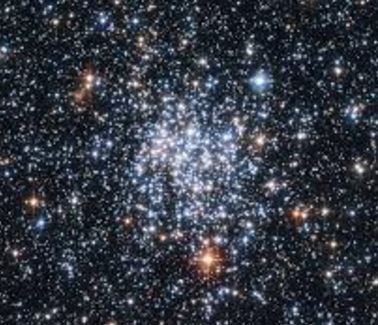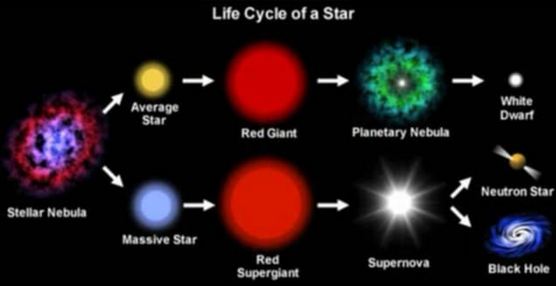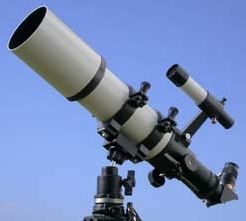In this post, you are going to learn about the Life cycle of a star step by step with Diagram.
This post includes:
- Introduction about stars
- Step by step life cycle of a star
- Star distance
- Formation of black holes
- Lots more
So if you want to get benefits from this post you’ll love this post.
Let’s Dive right in..
What are stars?
On a clear night, we can see a cloudy band that stretches North to South across the sky.in fact, we are seeing part of our own galaxy, the Milky Way.there countless stars in our galaxy. We cannot see our galaxy as a whole, but scientists can see many other galaxies in the sky.
We see many twinkling lights in the night sky. Some of these lights come from objects in space called stars. The Sun is also a star. Beyond the solar system, billions and billions of stars are present in space. Every star is a ball of glowing gases that emits energy in the form of heat and light. Astronomers say that our Sun is a medium-sized star. Some stars are much larger and some are smaller than our Sun.
Colors of Stars
We know that stars emit heat and light in different amounts, so, stars have different temperatures. The color of a star is related to its temperature.
The coolest stars have about 2800⁰ C temperature at their surfaces and appear red. The hottest stars have 28000⁰C are higher temperatures and look blue. The stars with in-between temperatures have orange, yellow and white colors.
The sun is a yellow star. It has a temperature of 5,500 to 6000⁰C at its surface. Stars that are a little colder then the sun look orange. Stars that are a little hotter then the sun appear white.
See the table of color and temperature of some stars:
| Name of star | Colour | The temperature in °C |
| Betelgeuse | red | 2800 |
| Arcturus | orange | 4100 |
| Sun | yellow | 6000 |
| Polaris | yellow | 5800 |
| Vega | white | 9700 |
| Algol | blue | 11700 |
| Beta | blue | 28000 |
The brightness of Stars: What affects the brightness of stars?
The brightness of the star of a star depends on two factors:
- The distance of the star from the earth.
- Amount of energy the stars emits imagine you mare looking to stars that are exactly the same distance from the earth. The star which emits a greater amount of energy will seem brighter than the other.
Now imagine two stars that emit an equal amount of energy. One is near to the earth and the other is very far away from the earth. Which star will look brighter? The near one or farther one?
Star Distances: How do we measure the distance to the star?
The stars are very far away from us. They are also at great distances from each other. Distance s between stars are so great that they cannot be measured in kilometer. Instead, we use light-years to express the distance in the universe. A light-year is a measure of distance that light covers in one year with a speed of 300,000 kilometers per second. It seems that a light-year is a very long distance.
Which is the closest star to Earth?
The sun is our closest to our galaxy. The next closest star Proxima Centauri is 4.2 light-years away from us. We can also say that light of this star will take 4.2 years to reach the earth.
The life cycle of a stars

Science has told us that the universe is finite, with a beginning, middle, and a future. Stars behave life cycles too. A star is also born, changes, and then dies. The lifespan of a star is measured in billions of years.
Birth of a star
We have studied that great clouds of gasses and dust are present in galaxies. Each of these clouds is called a nebula. Stars are burn-in the nebula (singular nebula). A nebula collects more dust and gas during its travel through space. the gas and dust particles are packed into a hot spinning ball of matter. Such a ball of the hot matter is called a protostar. With the passage of time, a protostar becomes hot enough to produce a great amount of energy. At this stage of the protostar is called a star. A star like the Sun emits light and heat all the time.
Death of a star
The matter of a star is converting into energy. This radiant energy is released into space. Our star (the Sun) is dying which is shown in the above figure.
Red Giant Stage
Our star (the Sun) has passed five billion years while emitting energy. After the next five billion years, the hydrogen in the core of the Sun may be used up. The Sun will start to collapse. The core will become denser and hotter and the Sun will swell in size. It will become a red giant. The Sun will be a red giant for only about 500 million years.
Dwarf Stage
By and by the Sun in the form of the red giant will cool and gravity will make it collapse inward. Our star will become a white dwarf at this stage. Eventually, the Sun will become a burn-out black chunk of every dense matter. It will not emit light anymore. This last stage of a star’s life is called a black dwarf.
Life cycle of star for kids (video)
What are Black Holes? Who discovered Black holes?
According to NASA, A black hole is a place in space where the force of gravity becomes infinity, that even light can not escape from it. This is the last stage of the Star. Black holes are invisible. 1916 Albert Einstein was the first who Discovered black holes with the help of his general theory of relativity.
Formation of Black Holes: How are black holes formed?
Stars more than six times as massive as our Sun are called massive stars. A massive star has a short lifespan than the Sun or other low-mass stars. Hydrogen in the core of a massive star is used up with much fast speed. After only 50 to 100 million years, no hydrogen is left in the core of a massive star. At this time, the core collapses and the star becomes 1000 times greater than its original size. It is now called a supergiant.
With the passage of time, the supergiant becomes so dense that it cannot bear the pressure of the outer layer. The outer layer crash inward with a tremendous explosion called a supernova. At the time of supernova, the light of the star becomes much more than all other stars of the galaxy. Great shells of gases fly off the star. Only the tiny core of the star remains left. This core contains only neutrons, so it is called a neutron star. It is extremely dense. Some times after the supernova explosion the massive star becomes a black hole.
A black hole is so dense that nothing can escape from it due to its very strong gravity. Even light cannot escape from a black hole and it is no more glowing. In fact, the black hole is the last stage of the life cycle of a massive star.
Types of black holes
According to NASA, there are two types of black holes:
- Stellar
- Supermassive
Looking at Stars
People have looked at the star for thousands of years. A telescope is a device that makes a faraway object appear very close. Many more stars can be seen with the telescope than with the unaided.
A simple telescope has two lenses.
The objective lens collects light from a distant object and brings that blight, or image, to a point of focus.
An eyepiece lens takes the light from the objective lens and magnifies it.
Safety Tips For Observing the Sun:
The Sun emits dangerous radiation. Viewing directly into the Sun can damage our eyesight. Make sure the safety of your eye before viewing the Sun.
- A pinhole or small opening is used to view the image of the Sun on a screen placed a half-meter or more beyond the opening.
- Use two or three sheets of X-Rays film for viewing the Sun.
Remember! No filter is safe for use with any optical device, i.e. telescope, binoculars, etc.
See also: